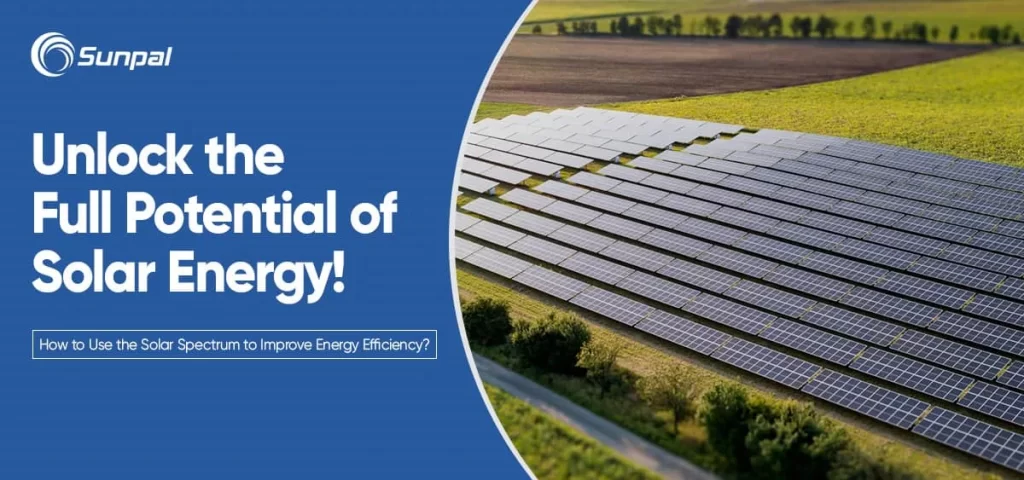
Die Kraft des Sonnenlichtspektrums freisetzen
Die Solarbranche erlebt eine rasante Innovation, um mit der wachsenden Nachfrage nach erneuerbaren Energielösungen Schritt zu halten. Mit Begriffen wie "Solarenergie-Trends 2025"und "Fortschritte in der Solarmodultechnologie" hat die Neugier auf die Art und Weise, wie Solarmodule das Licht nutzen, zugenommen. Eine häufige Frage ist, ob diese Module nur mit sichtbarem Licht arbeiten oder ob sie das gesamte Spektrum der Sonnenstrahlung nutzen können. In diesem Artikel werden wir die Wahrheit über die Nutzung des Sonnenspektrums herausfinden und die neuesten Durchbrüche vorstellen, die die Zukunft der Solartechnologie prägen.
Wie Solarmodule das Sonnenlicht einfangen
Im Kern erzeugen Solarmodule Strom durch photovoltaische (PV) Zellen. Diese Zellen basieren auf Halbleitern wie Silizium, die das Sonnenlicht über den photovoltaischen Effekt in Energie umwandeln. Wenn Sonnenlicht auf die Oberfläche eines Solarmoduls trifft, lösen Photonen (Lichtteilchen) Elektronen aus dem Halbleiter und erzeugen einen elektrischen Strom. Dieser Strom wird dann in nutzbare Energie für private, gewerbliche oder industrielle Anwendungen umgewandelt.
Die meisten PV-Zellen sind für sichtbares Licht optimiert, also für den Teil des Sonnenspektrums, den wir mit bloßem Auge sehen können. Die Sonne strahlt jedoch Energie über ein viel breiteres Spektrum ab, was die Frage aufwirft: Schöpfen wir das Potenzial der Solarenergie optimal aus?
Abbildung 1 veranschaulicht die Aufteilung der Energie des Sonnenlichts über das elektromagnetische Spektrum:

Das sichtbare Licht dominiert die Solarenergieerzeugung, aber technologische Fortschritte erschließen das Potenzial anderer Wellenlängen, was deutlich macht, warum "Fortschritte in der Solarmodultechnologie" zu einem wichtigen Suchbegriff geworden ist.
Jenseits des sichtbaren Spektrums
Die Solarenergie ist nicht nur auf sichtbares Licht beschränkt. Um besser zu verstehen, wie Solarmodule mit verschiedenen Wellenlängen interagieren, sollten Sie die drei wichtigsten Segmente des Sonnenspektrums betrachten:
- Sichtbares Licht
Sichtbares Licht ist nach wie vor die effizienteste Quelle für PV-Zellen. Es liefert die höchste Energieausbeute mit minimalen Änderungen an den aktuellen Solarmodulkonstruktionen. Moderne Systeme konzentrieren sich stark auf das Einfangen dieses Teils des Sonnenlichts, um einen gleichbleibend hohen Wirkungsgrad zu erzielen.
- Infrarotlicht (IR)
Infrarotlicht, das fast die Hälfte der Sonnenenergie ausmacht, hat ein immenses Potenzial. Obwohl es eine geringere Intensität hat, verbessert die Forschung an Materialien wie Tandemzellen und Perowskit-Technologien die Fähigkeit von Modulen zur Nutzung von IR-Licht. Diese Innovation könnte das Wachstum der weltweiten Solarenergiekapazität ankurbeln - einer der wichtigsten Solarenergie-Trends für 2025.
- Ultraviolettes Licht (UV)
Obwohl Ultraviolett nur einen kleinen Teil des Sonnenspektrums ausmacht, ist es aufgrund seiner hohen Energiedichte für moderne Anwendungen attraktiv. Die Beschichtungen von Solarmodulen werden verbessert, um UV-Strahlen besser zu absorbieren und die Leistung unter verschiedenen Lichtverhältnissen zu erhöhen.
Schaubild 2 vergleicht die Energieerzeugungskapazitäten der aktuellen Solarmodultechnologien in diesen Spektrumssegmenten:

Mit Innovationen, die eine bessere Nutzung des Spektrums unterstützen, ist Sunpal in der Lage, aus diesen Durchbrüchen vollen Nutzen zu ziehen.
Innovationen, die die Solartechnik verändern
Das Interesse an der Suche nach "Fortschritten in der Solarmodultechnologie" spiegelt eine Welle der Spitzenforschung und -entwicklung in der Branche wider. Hier sind einige bemerkenswerte Technologien, die Schlagzeilen machen:
1. perowskitische Solarzellen
Eine der interessantesten Neuerungen ist die Verwendung von Perowskit-Materialien. Diese haben ein außerordentliches Potenzial für die Absorption von sichtbarem und infrarotem Licht gezeigt, was die Effizienz in Verbindung mit herkömmlichen Siliziumzellen erheblich steigert.
2. Bifaciale Solarmodule
Die Bifacial-Technologie nutzt das Licht sowohl von der Vorder- als auch von der Rückseite des Panels und maximiert so die Sonneneinstrahlung auf die Oberfläche. Sie fängt das vom Boden reflektierte Licht ein und steigert die Energieausbeute um bis zu 30%.
3.Quantum Dot Technologie
Quantenpunkte sind Nanomaterialien, die bestimmte Teile des Spektrums effizient absorbieren können. Sie können die Lücke zwischen der Maximierung von sichtbarem und nicht sichtbarem Licht schließen und so die Nutzung des Spektrums weiter optimieren.
4.Trends der Speicherintegration
Solar- und Energiespeichertechnologien, insbesondere Lithiumbatterien, verändern die Art und Weise, wie Solarstrom erzeugt, verwaltet und gespeichert wird. Die Integration von Batteriespeichern mit spektraleffizienten Modulen sorgt für die Zuverlässigkeit erneuerbarer Energien, die auf den Märkten für Privathaushalte und Unternehmen zunehmend gefragt ist.
Abbildung 3 zeigt, wie die Kombination dieser Fortschritte die Gesamteffizienz des Systems im Vergleich zu herkömmlichen PV-Systemen erhöht:

Diese Fortschritte machen die Solarenergie vielseitiger, kosteneffizienter und in verschiedenen Landschaften realisierbar.
Sunpals Rolle als Vorreiter in der Solarenergie
Während sich der weltweite Fokus auf saubere Energien verlagert, verschiebt Sunpal die Grenzen dessen, was photovoltaische Solarsysteme leisten können. Durch das Angebot von Lösungen aus einer Hand, die auf private, gewerbliche und industrielle Anwendungen zugeschnitten sind, setzt Sunpal Maßstäbe bei der Einführung erneuerbarer Energien.
Von netzgebundenen Systemen bis hin zu hybriden und netzunabhängigen Lösungen integriert Sunpal die neuesten Fortschritte in der Spektrumstechnologie, um die Energiegewinnung zu maximieren. Mit mehr als einem Jahrzehnt an Erfahrung und Niederlassungen in mehreren Regionen ermöglicht das Unternehmen seinen Kunden, Teil der Revolution im Bereich der erneuerbaren Energien zu werden.
Eine Zukunft, die von Licht angetrieben wird
Sonnenkollektoren sind nicht mehr nur auf die Nutzung des sichtbaren Lichts beschränkt. Mit den laufenden Innovationen bei der Nutzung des IR- und UV-Spektrums steht die Branche an der Schwelle zu einem großen Wandel. Die neuesten Technologien für Solarmodule und Strategien zur Optimierung des Spektrums ebnen den Weg für umweltfreundlichere, effizientere und kostengünstigere Energielösungen.
Indem wir den "Solarenergietrends 2025" immer einen Schritt voraus sind und bahnbrechende Technologien integrieren, stellt Sunpal sicher, dass es eine treibende Kraft in der Bewegung für saubere Energie bleibt. Gemeinsam können wir das gesamte Lichtspektrum nutzbar machen und die Welt nachhaltig mit Energie versorgen.
